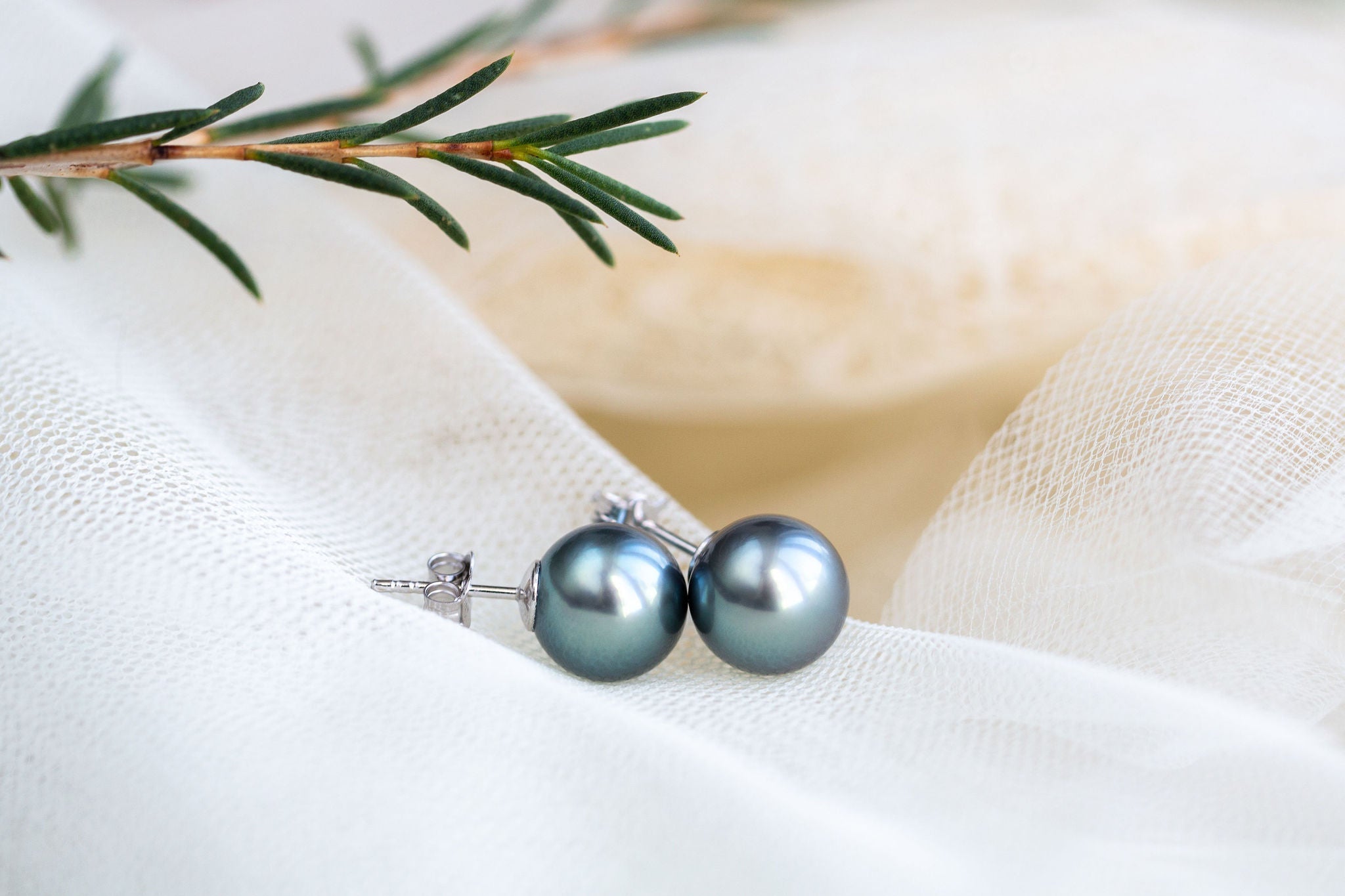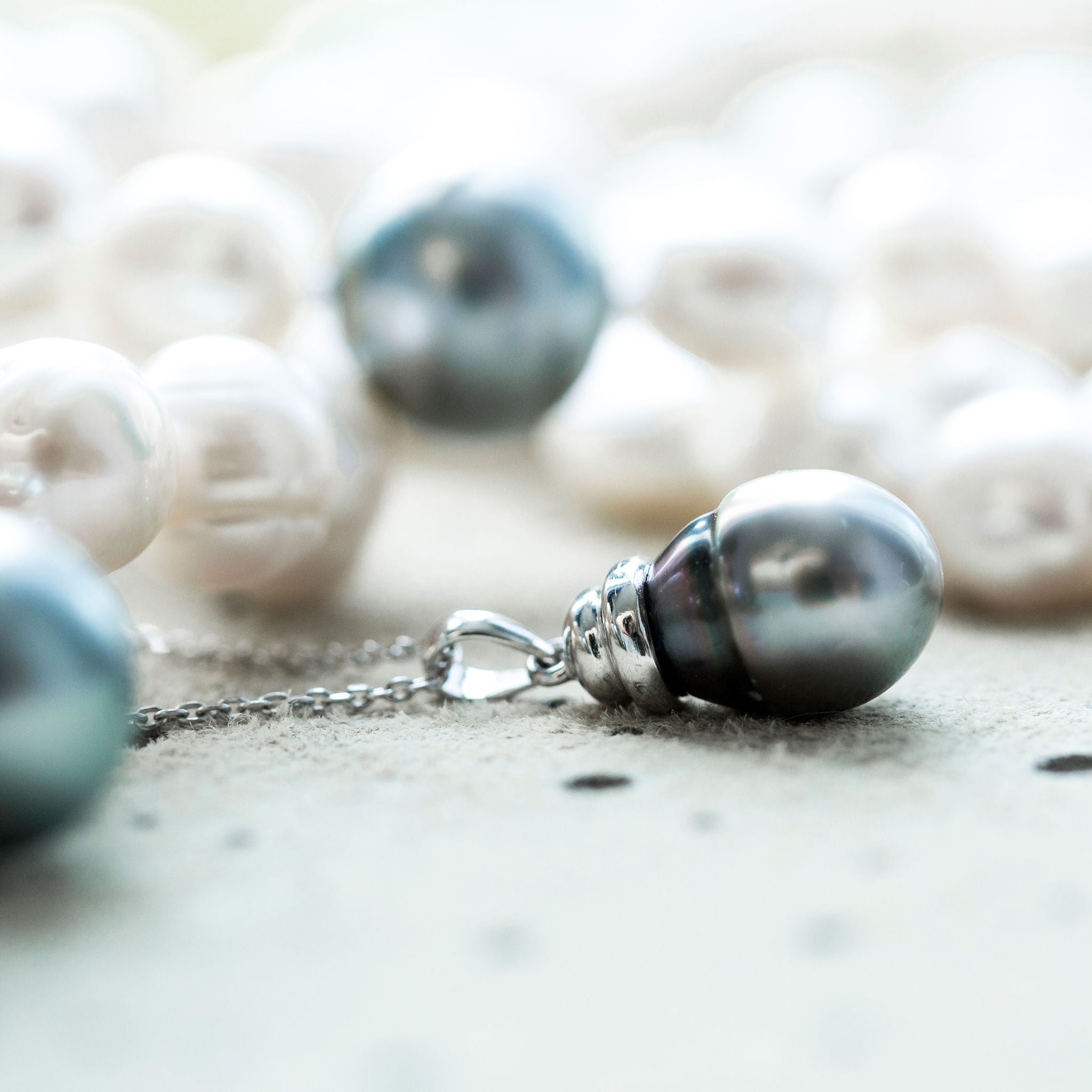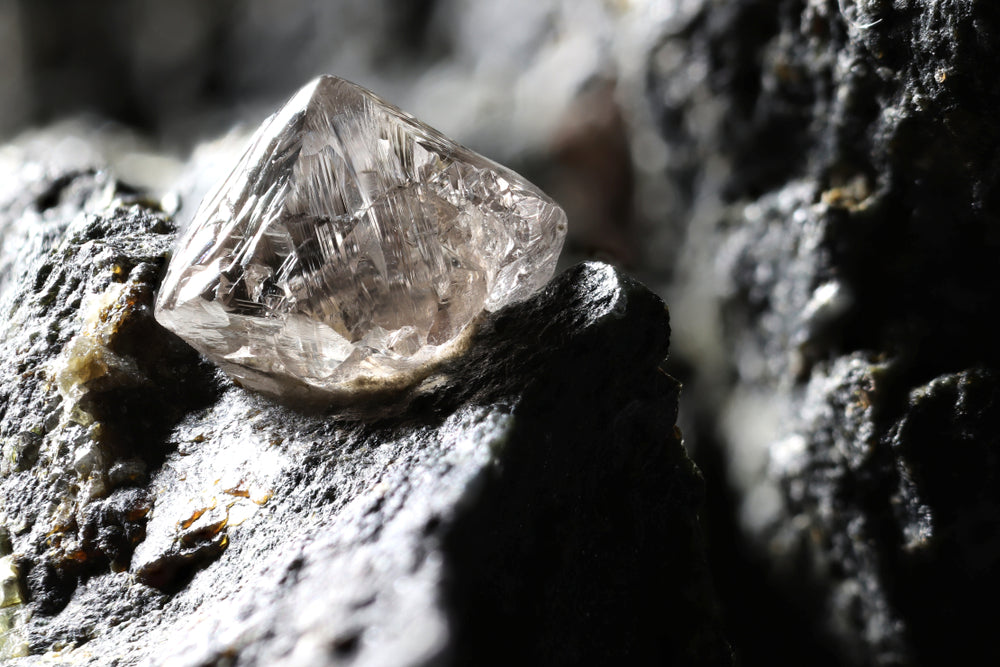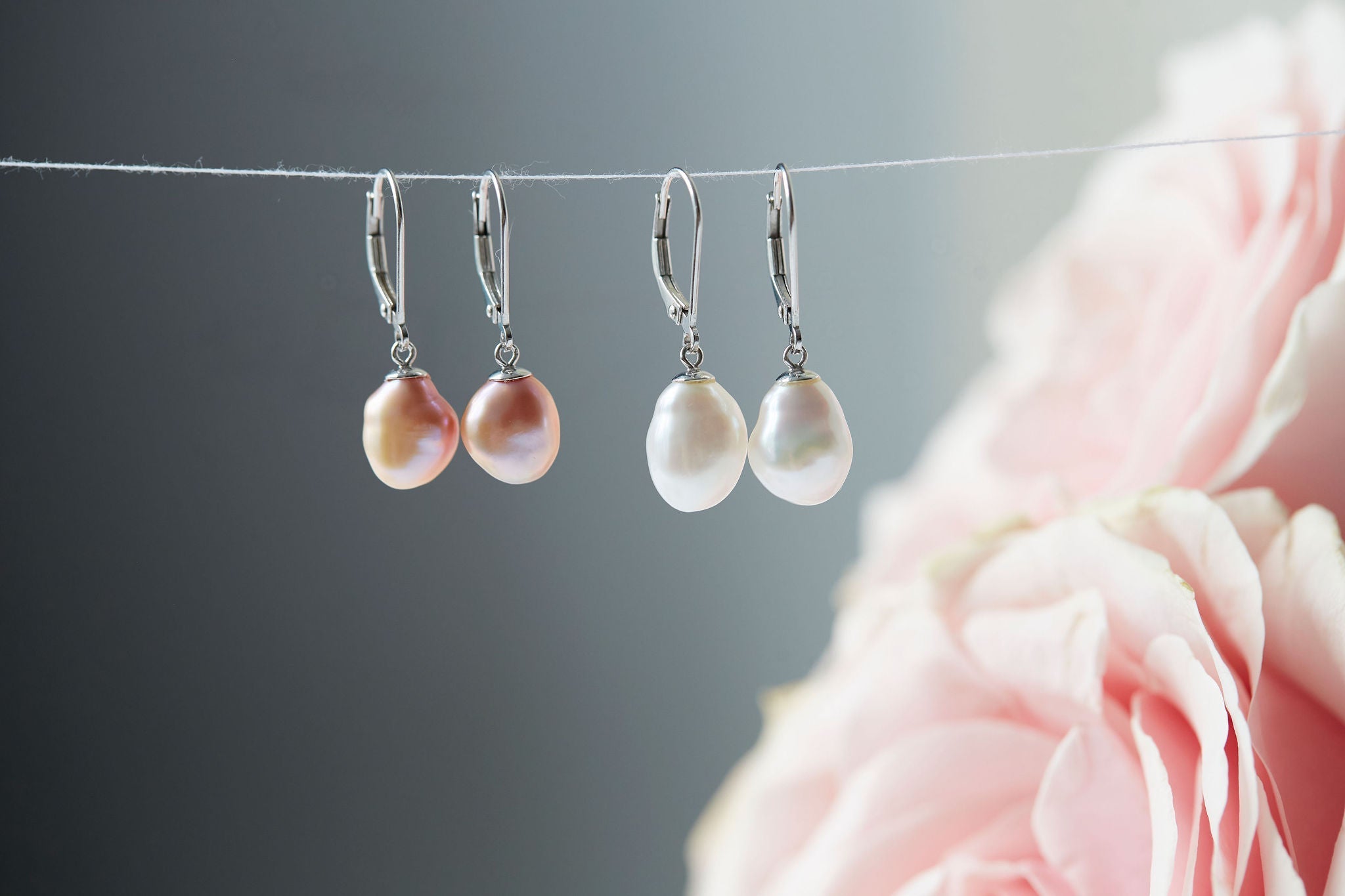
Black pearls: where do these iconic pearls come from?
Famous worldwide for their unique beauty and rarity, Tahitian pearls, also known as "black pearls," are cultivated in the seas of French Polynesia, more precisely in pearl farms located in the islands and atolls of this paradise region.

Very fashionable, their colors vary according to the nature of the graft and the geographical origin of the pearl. Thus, depending on the lagoon where the oysters are cultivated, the shade of the pearl varies: some varieties adopt very light, almost white shades, while others approach gray, blue, green, gold or a dark purple reminiscent of the color of eggplant.
Despite what their name suggests, Tahitian pearls do not come from Tahiti. This name originates from the time when pearl farmers from other islands of French Polynesia traveled to Tahiti to sell their wares, thus popularizing the region for this iconic black pearl.
There are five types of shapes: round (the sphere is almost perfect), semi-round (the pearl has a sphere shape, its diameter varies from 2 to 5%), semi-baroque (the pearl has a drop, pear, oval or button shape), baroque (the pearl is very irregular) and finally circled (the pearl has one or more concentric circles around its surface).
The Tahitian pearl comes from the Pinctada margaritifera oyster and is considered the cousin of the South Sea pearl, which comes from the Pinctada maxima oyster.

The price of a Tahitian pearl is directly linked to its rarity. Round pearls, for example, represent an average of 5% of a harvest, compared to 30% for circled pearls. These are the rarest pearls and therefore the most expensive.
Today, Tahitian pearls are among the most sought-after in the world.

____
I am Mélanie Pilote, founder and designer of the Melanie Stones jewelry line, passionate about the art of enhancing the unique beauty of each woman through timeless pieces.
Please feel free to leave me a comment or share this article if you liked it.
To make sure you don't miss any of our news and creations, subscribe to our newsletter!
See you soon,
Melanie






Leave a comment
This site is protected by hCaptcha and the hCaptcha Privacy Policy and Terms of Service apply.